Publications
Abrahamson Lab Publications
PDF Copies of many of our publications are available at:
researchgate.net or https://www.academia.edu/
Research-Topic Categories:
- Goldenrods, Gall Insects, Natural Enemies, Tritrophic Level Interactions, Plant Defenses (50%)
- Florida Fire Ecology, Mast Seeding, Cynipid Wasp Systematics & Ecology, Plant Demography (38%)
- Pedagogy, How We Do Science (7%)
- Natural Areas (5%)
176. Wise, M.J., D.S. Lavy, and W.G. Abrahamson. Submitted. What controls the level of variability in fitness-related traits within plant populations? An investigation of genetic variation, phenotypic plasticity, and potential tradeoffs among four reproductive traits of tall goldenrod (Solidago altissima). PLANTS.
175. Heberlein, E.T., W.G. Abrahamson, and J.P. Sparks. Submitted. Is a historical vegetation map a useful predictor of dry season soil water fraction in seasonal ponds? Wetlands. https://doi.org/10.21203/rs.3.rs-6752646/v1
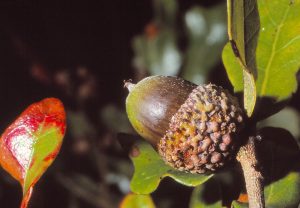 174. Abrahamson, W.G. 2025. Florida scrub is nuts (and drupes): Fruit production and consumption in Florida’s fire-prone, xeric uplands. Palmetto (The Quarterly Journal of the Florida Native Plant Society) 41(2): 4-8+cover.
174. Abrahamson, W.G. 2025. Florida scrub is nuts (and drupes): Fruit production and consumption in Florida’s fire-prone, xeric uplands. Palmetto (The Quarterly Journal of the Florida Native Plant Society) 41(2): 4-8+cover.
173. Abrahamson, W.G. 2024. Oaks have a lot of gall: The intimate interactions of oaks and gall wasps. Palmetto (The Quarterly Journal of the Florida Native Plant Society) 40(2): 4-7.
172. Abrahamson, W.G., C.R. Abrahamson, S.M. Koontz, E.H. Tran, E.S. Menges, and A.S. David. 2023. What kills the virtually immortal palms of the Florida scrub? American Journal of Botany 110(10): e16234. https://doi.org/10.1002/ajb2.16234.
171. Abrahamson, W.G. 2023. Survival, growth and biomass estimates of two dominant palmetto species of south-central Florida from 1981 – 2022, ongoing at 5-year intervals ver. 2. Environmental Data Initiative. https://doi.org/10.6073/pasta/99144f86666f8fccebddc4ce7fb72681.
170. Melika, G., J.A. Nicholls, W.G. Abrahamson, E.A. Buss, & G.N. Stone. 2021. New species of Nearctic oak gall wasps (Hymenoptera: Cynipidae, Cynipini). Zootaxa, 5084(1): 1–131. https://doi.org/10.11646/zootaxa.5084.1.1
169. Abrahamson, W.G., C.R. Abrahamson, and M.A. Keller. 2021. Photo Gallery — Lessons from four decades of monitoring vegetation and fire: maintaining diversity and resilience in Florida’s uplands. Bulletin of the Ecological Society of America 102(2): e01839. http://dx.doi.org/10.1002/bes2.1839
168. Abrahamson, W.G., C.R. Abrahamson, and M.A. Keller. 2021. Lessons from four decades of monitoring vegetation and fire: maintaining diversity and resilience in Florida’s uplands. Ecological Monographs 91(2): e01444. 10.1002/ecm.1444. http://dx.doi.org/10.1002/ecm.1444. Additional supporting information may be found at: http://onlinelibrary.wiley.com/doi/10.1002/ecm.1444/full.
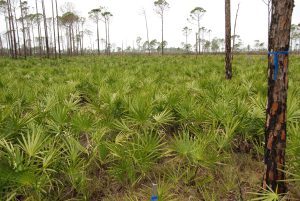 167. Abrahamson, W.G. 2020. Monitoring of vegetation and fire in Florida scrub, flatwoods, and wet prairie in south-central Florida from 1977-2015. Environmental Data Initiative https://doi.org/10.6073/pasta/adff9897f359712baf4cdb0c4867e040.
167. Abrahamson, W.G. 2020. Monitoring of vegetation and fire in Florida scrub, flatwoods, and wet prairie in south-central Florida from 1977-2015. Environmental Data Initiative https://doi.org/10.6073/pasta/adff9897f359712baf4cdb0c4867e040.
166. Cronin, J.T., G. Melika, and W.G. Abrahamson. 2020. Time-since fire and cynipid gall wasp assemblages on oaks. Biodiversity and Conservation 29: 1177-1203. https://doi.org/10.1007/s10531-020-01930-w
165. Moffat, C.E., M.K. Takahashi, S.L. Pease, J.M. Brown, S.B. Heard, and W.G. Abrahamson. 2019. Are Eurosta solidaginis on Solidago rugosa a divergent host-associated race? Evolutionary Ecology 33: 369-384. https://doi.org/10.1007/s10682-018-9966-z
164. Abrahamson W.G. 2019. Survival, growth and biomass estimates of two dominant palmetto species of south-central Florida from 1981 – 2017, ongoing at five-year intervals. Environmental Data Initiative. https://doi:10.6073/pasta/f2f96ec76fbbd4b9db431c79a770c4d5
163. Whipple, A.V., J.T. Irwin, P.L. Heinrich, and W.G. Abrahamson. 2017. Distribution data support warm winter temperatures as a key limit on the range of a goldenrod gall fly host race. Northeastern Naturalist 24 (Special Issue 7 Winter Ecology: Insights from Biology and History): B235-B250.
162. Murphy, S.M., W.A. Ulrey, J.M. Guthrie, D.S. Maehr, W.G. Abrahamson, S.C. Maehr, and J.J. Cox. 2017. Food habits of a small Florida black bear population in an endangered ecosystem. Ursus 28: 92-104. https://doi.org/10.2192/URSU-D-16-00031.1
161. Wise, M.J. and W.G. Abrahamson. 2017. Constraints on the evolution of resistance to gall flies in Solidago altissima: Resistance sometimes costs more than it is worth. New Phytologist. https://nph.onlinelibrary.wiley.com/doi/full/10.1111/nph.14583
160. Abrahamson, W.G. 2016. Age-old palms on Florida’s ancient ridges. Palmetto (The Quarterly Journal of the Florida Native Plant Society) 33(3): 8-11, 15.
159. Abrahamson, W.G. 2016. A tale of two palmettos: the foundation of ecosystems. Palmetto (The Quarterly Journal of the Florida Native Plant Society) 33(3): 4-7, 15.
158. Dorchin, N., J.B. Joy, L.K. Hilke, M.J. Wise, and W.G. Abrahamson. 2015. Taxonomy and phylogeny of the Asphondylia species (Diptera: Cecidomyiidae) on North American goldenrods: challenging morphology, complex host-associations, and cryptic speciation. Zoological Journal of the Linnean Society 174: 265-304.
157. Abrahamson, W.G. and S.P. Vander Kloet. 2014. The reproduction and ecology of Hypericum edisonianum: an endangered Florida endemic. Castanea 79: 168-181. http://www.castaneajournal.org/doi/pdf/10.2179/14-016
156. March, P.J., M.J. Wise, and W.G. Abrahamson. 2013. The effects of resource stress on goldenrod’s tolerance of folivory depends more on the identity of the stress than on the severity of the stress. International Journal of Modern Botany 3(2A):15-25. DOI: 10.5923/s.ijmb.201310.03
155. Wise, M.J. and W.G. Abrahamson. 2013. Modeling simultaneous selection for resistance and tolerance in goldenrod (Solidago altissima) across a range of spittlebug population densities. International Journal of Modern Botany 3(2A): 5-14. DOI: 10.5923/s.ijmb.201310.02
154. Rhodes, B.C., C.P. Blair, M.K. Takahashi, and W.G. Abrahamson. 2012. The role of olfactory cues in the sequential speciation of a gall-boring beetle, Mordellistena convicta.
Ecological Entomology 37:500-507.
153. Takahashi, M.K., T. Kubota, L.M. Horner, N.A. Keller, and W.G. Abrahamson. 2012. The spatial signature of biotic interactions of a clonal and a non-clonal palmetto in a subtropical plant community. Ecosphere 3(7):68. http://dx.doi.org/10.1890/ES12-00101.1
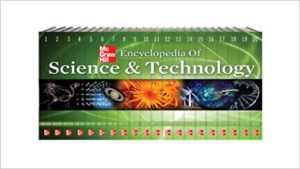
152. Abrahamson, W.G. and T.N. Taylor. 2011. Plant animal interactions. In McGraw-Hill Encyclopedia of Science & Technology.
151. Takahashi, M.K., L.M. Horner, T. Kubota, N.A. Keller, and W.G. Abrahamson. 2011. Extensive clonal spread and extreme longevity in saw palmetto, a foundation clonal plant. Molecular Ecology 20: 3730-3742.
150. Layne, J.N. and W.G. Abrahamson. 2010. Spatiotemporal variation of fruit digestible-nutrient production in Florida’s uplands. Acta Oecologica 36: 675-683.
149. Wise M.J. and W.G. Abrahamson. 2010. Genetic variation for susceptibility to storm-induced stem breakage in Solidago altissima: the role of stem height and morphology. Acta Oecologica 36: 372-376.
148. Blair, C.P., R.V. Schlanger, S.E. Diamond, and W.G. Abrahamson. 2010. Nutrition as a facilitator of host-race formation: the role of food quality in the shift of a stem-boring beetle to a gall host. Ecological Entomology 35: 396-406.
147. Wise, M.J., W.G. Abrahamson, and J.A. Cole. 2010. The role of nodding stems in the goldenrod-gall-fly interaction: a test of the “ducking” hypothesis. American Journal of Botany 97: 525-529.
146. Abrahamson, W.G. and C.R. Abrahamson. 2009. Life in the slow lane: palmetto seedlings exhibit remarkable survival but slow growth in Florida’s nutrient-poor uplands. Castanea 74: 123-132.
145. Dorchin, N., M.V. McEvoy, T.A. Dowling, W.G. Abrahamson, and J.G. Moore. 2009. Revision of the goldenrod-galling Rhopalomyia species (Diptera: Cecidomyiidae) in North America. Zootaxa 2152: 1-35.
144. Wise, M.J., C.G. Yi, and W.G. Abrahamson. 2009. Associational resistance, gall-fly preferences, and a stem dimorphism in Solidago altissima. Acta Oecologica 35: 471-476.
143. Whipple, A.V., W.G. Abrahamson, M.A. Khamiss, P.L. Heinrich, A.G. Urian, and E.M. Northridge. 2009. Host-race formation: promoted by phenology, constrained by heritability. Journal of Evolutionary Biology 22: 793-804.
142. Dorchin, N., S.D. Jordan, E.R. Scott, C.E. Clarkin, M.P. Luongo, and W.G. Abrahamson. 2009. Behavioural, ecological and genetic evidence confirm the occurrence of host-associated differentiation in goldenrod gall midges. Journal of Evolutionary Biology 22: 729-739.
141. Wise, M.J. and W.G. Abrahamson. 2008. Ducking as a means of resistance to herbivory in tall goldenrod, Solidago altissima. Ecology 89: 3275–3281.
140. Wise, M.J. and W.G. Abrahamson. 2008. Applying the limiting resource model to plant tolerance of apical meristem damage. American Naturalist 172: 635-647.
139. Abrahamson, W.G. and M.R. Weaver. 2008. EcoSampler: a learning object for community sampling, community structure, and succession. Bulletin of the Ecological Society of America 89: 435-447. http://www.departments.bucknell.edu/biology/courses/biol208/EcoSampler/
138. Wise, M.J., L.E. Coffey, and W.G. Abrahamson. 2008. Nutrient stress and gall flies interact to affect floral-sex ratio in gynomonoecious Solidago altissima (Asteraceae). American Journal of Botany 95: 1233–1239.
137. Diamond, S.E., C.P. Blair, and W.G. Abrahamson. 2008. Testing the nutrition hypothesis for the adaptive nature of insect galls: does a non-adapted herbivore perform better in galls? Ecological Entomology 33: 385-393.
136. Tooker, J.F., J.R. Rohr, W.G. Abrahamson, and C.M. De Moraes. 2008. Gall insects can avoid and alter indirect plant defenses. New Phytologist 178: 657–671.
135. Wise, M.J., J.M. Partelow, K.J. Everson, M.K. Anselmo, and W.G. Abrahamson. 2008. Good mothers, bad mothers, and resistance to herbivory in Solidago altissima. Oecologia 155: 257-266.
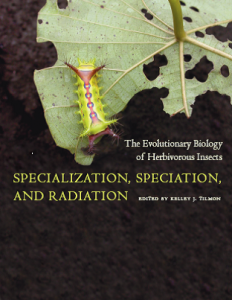
134. Abrahamson, W.G. and C.P. Blair. 2008. Sequential radiation through host-race formation: herbivore diversity leads to diversity in natural enemies. In: K. Tilmon, ed. Specialization, Speciation, and Radiation: the Evolutionary Biology of Herbivorous Insects. University of California Press, USA, pp. 188-202.
133. Abrahamson, W.G. 2007. Leaf traits and leaf-life spans of two xeric-adapted palmettos. American Journal of Botany 94: 1297-1308.
132. Dorchin, N., C.E. Clarkin, E.R. Scott, M.P. Luongo, and W.G. Abrahamson. 2007. Taxonomy, life history, and population sex ratios of North American Dasineura (Diptera: Cecidomyiidae) on goldenrods (Asteraceae). Annals of the Entomological Society of America 100: 539-548.
131. Stevens, L.E., T.L. Griswold, O. Messenger, W.G. Abrahamson, and T.J. Ayers. 2007. Plant and pollinator diversity in northern Arizona. The Plant Press 31: 5-7.
130. Melika, G. and W.G. Abrahamson. 2007. Review of the Nearctic gallwasp species of the genus Bassettia Ashmead, 1887, with description of new species (Hymenoptera: Cynipidae: Cynipini). Acta Zoologica Academiae Scientiarum Hungaricae 53: 131-148.
129. Wise, M.J. and W.G. Abrahamson. 2007. Effects of resource availability on tolerance of herbivory: a review and assessment of three opposing models. American Naturalist 169: 443-454.
128. Wise, M.J., W.G. Abrahamson, and K. Landis. 2006. Edaphic environment, gall midges, and goldenrod clonal expansion in a mid-successional old field. Acta Oecologica 30: 365-373.
127. Layne, J.N. and W.G. Abrahamson. 2006. Scrub hickory: a Florida endemic. The Palmetto 23(2): 4-13.
126. Abrahamson, W.G. and C.R. Abrahamson. 2006. Post-fire canopy recovery in two fire-adapted palms, Serenoa repens and Sabal etonia (Arecaceae). Florida Scientist 69: 69-79.
125. Dorchin, N., E.R. Scott, and W.G. Abrahamson. 2006. First record of Macrolabis (Diptera: Cecidomyiidae) in America: a new inquiline species from Dasineura folliculi galls on goldenrods. Annals of the Entomological Society of America 99: 656-661.
124. Wise, M.J., R.J. Fox, and W.G. Abrahamson. 2006. Disarming the paradox of sublethal-plant defense against insects: Trirhabda virgata larval development time and leaf tissue loss on Solidago altissima. Entomologia Experimentalis et Applicata 120: 77-87.
123. Ketterer, E. and W.G. Abrahamson. 2006. Purple loosestrife on the Susquehanna River’s West Branch: distribution and environmental correlates. Northeastern Naturalist 13: 213-234.
122. Wise, M.J., D.L. Kieffer, and W.G. Abrahamson. 2006. Costs and benefits of gregarious feeding in the meadow spittlebug, Philaenus spumarius. Ecological Entomology 31: 548-555.
121. Abrahamson, W.G., K. Ball Dobley, H.R. Houseknecht, and C.A. Pecone. 2005. Ecological divergence among five co-occurring species of old-field goldenrods. Plant Ecology 177: 43-56.
120. Blair, C.P., W.G. Abrahamson, J.A. Jackman, and L. Tyrrell. 2005. Cryptic speciation and host-race formation in a purportedly generalist tumbling flower beetle. Evolution 59: 304-316.
119. Wise, M.J. and W.G. Abrahamson. 2005. Beyond the compensatory continuum: environmental resource levels and plant tolerance of herbivory. Oikos 109: 417-428.
118. Abrahamson, W.G. 2004. Insects raise some galling questions. New England Wild Flower Conservation Notes 8: 14-15.
117. Abrahamson, W.G. and A.C. Gohn. 2004. Classification and successional changes of mixed-oak forests at the Mohn Mill area, Pennsylvania. Castanea 69: 194-206.
116. Layne, J.N. and W.G. Abrahamson. 2004. Long-term trends in annual reproductive output of the scrub hickory: factors influencing variation in size of nut crop. American Journal of Botany 91: 1378-1386.
115. Price, P.W., W.G. Abrahamson, M.D. Hunter, and G. Melika. 2004. Using gall wasps on oaks to test broad ecological concepts. Conservation Biology 18: 1405-1416.
114. Eubanks, M.D., C.P. Blair, and W.G. Abrahamson. 2003. One host shift leads to another? Evidence of host-race formation in a predaceous gall-boring beetle. Evolution 57: 168-172.
113. Abrahamson, W.G., M.D. Hunter, G. Melika, and P.W. Price. 2003. Cynipid gall-wasp communities correlate with oak chemistry. Journal of Chemical Ecology 29: 209-223.
112. Zawadzkas, P.P. and W.G. Abrahamson. 2003. Forest composition, spatial pattern, and size structure of the Snyder-Middleswarth Natural Area old-growth, Snyder County, Pennsylvania. Castanea 68: 31-42.
111. Abrahamson, W.G., C.P. Blair, M.D. Eubanks, and S.A. Morehead. 2003. Sequential radiation of unrelated organisms: the gall fly Eurosta solidaginis and the tumbling flower beetle Mordellistena convicta. Journal of Evolutionary Biology 16: 781-789.
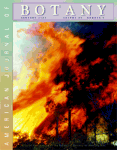
110. Abrahamson, W.G. and J.N. Layne. 2003. Long-term patterns of acorn production for five oak species in xeric Florida uplands. Ecology 84: 2476-2492.
109. Abrahamson, W.G. and J.N. Layne. 2002. Post-fire recovery of acorn production by four oak species in southern ridge sandhill association in south-central Florida. American Journal of Botany 89: 119-123.
108. Abrahamson, W.G. and J.N. Layne. 2002. Relation of ramet size to acorn production in five oak species of xeric upland habitats in south-central Florida. American Journal of Botany 89: 124-131.
107. Johnson, A.F. and W.G. Abrahamson. 2002. Stem turnover in the clonal scrub oak, Quercus inopina. American Midland Naturalist 147: 237-246.
106. Abrahamson, W.G. and C.R. Abrahamson. 2002. Persistent palmettos: effects of the 2000-2001 drought on Serenoa repens and Sabal etonia. Florida Scientist 65: 281-292.
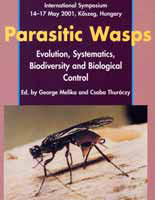
105. Melika, G. and W.G. Abrahamson. 2002. Review of the world genera of oak cynipid wasps (Hymenoptera: Cynipidae, Cynipini). In: G. Melika and Cs. Thuróczy, eds. Parasitic Wasps: Evolution, Systematics, Biodiversity and Biological Control. Agroinform, Budapest, Hungary, pp. 150-190.
104. Cronin, J.T., K. Hyland, and W.G. Abrahamson. 2001. The pattern, rate, and range of within-patch movement of a stem-galling fly. Ecological Entomology 26: 16-24.
103. Cronin, J.T. and W.G. Abrahamson. 2001. Goldenrod stem galler preference and performance: effects of multiple herbivores and plant genotypes. Oecologia 127: 87-96.
102. Heinrich, P., W.G. Abrahamson, A.V. Whipple, and W.G. Goodenow. 2001. The goldenrod and the gallfly: evolution of an interaction. 36-min video. The Pennsylvania State Media Sales, University Park, PA. http://www.projects.bucknell.edu/solidago/gallfly_video.html
101. Cronin, J.T., W.G. Abrahamson, and T.P. Craig. 2001. Temporal variation in herbivore host-plant preference and offspring performance: constraints on host-plant adaptation. Oikos 93: 312-320.
100. Cronin, J.T. and W.G. Abrahamson. 2001. Do parasitoids diversify in response to host-plant shifts by herbivorous insects? Ecological Entomology 26: 347-355.
99. Abrahamson, W.G., M.D. Eubanks, C.P. Blair, and A.V. Whipple. 2001. Gall flies, inquilines, and goldenrods: a model for host-race formation and sympatric speciation. American Zoologist 41: 928-938.
98. Melika, G. and W.G. Abrahamson. 2000. Review of the cynipid gall wasps of the genus Loxaulus (Hymenoptera: Cynipidae) with descriptions of new species. Proceeding of the Entomological Society of Washington 102: 198-211.
97. Sumerford, D.V., W.G. Abrahamson, and A.E. Weis. 2000. The effects of drought on the Solidago altissima – Eurosta solidaginis – natural enemy complex: population dynamics, local extirpations, and measures of selection intensity on gall size. Oecologia 122: 240-248.
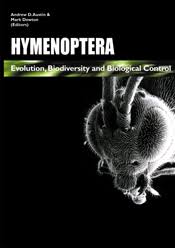
96. Craig, T. P., J. K. Itami, C. Shantz, W. G. Abrahamson, J. D. Horner, and J. V. Craig. 2000. The influence of host plant variation and intraspecific competition on oviposition preference and offspring performance in host races of Eurosta solidaginis. Ecological Entomology 25: 7-18.
95. Melika, G. and W.G. Abrahamson. 2000. Historical review and current state of the world generic classification of oak galls (Hymenoptera: Cynipidae: Cynipini). In: A. D. Austin and M. Dowton, eds. Hymenoptera: Evolution, Biodiversity and Biological Control. CSIRO Publishing, Collingwood VIC Australia, pp. 218-230.
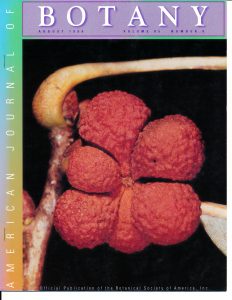
94. Abrahamson, W.G. 1999. Episodic reproduction in two fire-prone palms, Serenoa repens and Sabal etonia (Palmae). Ecology 80: 100-115.
93. Craig, T.P., W.G. Abrahamson, J.K. Itami, and J.D. Horner. 1999. Oviposition preference and offspring performance of Eurosta solidaginis on genotypes of Solidago altissima. Oikos 86: 119-128.
92. Horner, J.D. and W.G. Abrahamson. 1999. Influence of plant genotype and early-season water deficits on oviposition preference and offspring performance in Eurosta solidaginis (Diptera: Tephritidae). American Midland Naturalist 142: 162-172.
91. Cronin, J.T. and W.G. Abrahamson. 1999. Host-plant genotype and other herbivores influence goldenrod stem galler preference and performance. Oecologia 121: 392-404.
90. Weis, A.E. and W.G. Abrahamson. 1998. Just Lookin’ for a Home. Natural History 107: 60-63.
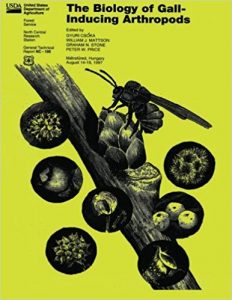
89. Abrahamson, W.G., G. Melika, R. Scrafford, and G. Csóka. 1998. Gall-inducing insects provide insights into plant systematic relationships. American Journal of Botany 85: 1159-1165.
88. Abrahamson, W.G., G. Melika, R. Scrafford, and G. Csóka. 1998. Host-plant associations and specificity among cynipid gall-inducing wasps of eastern USA. In: G. Csóka, W. J. Mattson, G. N. Stone and P. W. Price, eds., The Biology of Gall-Inducing Arthropods. USDA Forest Service, North Central Experiment Station. General Technical Report NC-199, pp. 226-240.
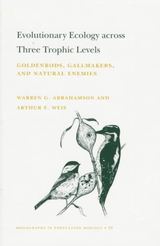
87. Abrahamson, W.G. and A.E. Weis. 1997. Evolutionary Ecology Across Three Trophic Levels: Goldenrods, Gallmakers, and Natural Enemies. Monographs in Population Biology 29. Princeton University Press. pp 456.
86. Melika, G. and W.G. Abrahamson. 1997. Descriptions of four new species of cynipid gall wasps of the genus Neurotus (Hymenoptera: Cynipidae) with redescriptions of some known species from the eastern United States. Proceedings of the Entomological Society of Washington 99: 560-573.
85. Melika, G. and W.G. Abrahamson. 1997. Synonymy of two genera (Eumayria and Trisoleniella) of cynipid gall wasps and description of a new genus, Eumayriella (Hymenoptera: Cynipidae). Proceedings of the Entomological Society of Washington 99: 666-675.
84. Brown, J.M., W.G. Abrahamson, and P.A. Way. 1996. Mitochondrial DNA phylogeography of host races of the goldenrod ball gallmaker Eurosta solidaginis (Diptera: Tephritidae). Evolution 50: 777-786.
83. Abrahamson, W.G. and J.R. Abrahamson. 1996. Effects of a low-intensity, winter fire on long-unburned sand pine scrub. Natural Areas Journal 16: 171-183.
82. Hess, M.D., W.G. Abrahamson, and J.M. Brown. 1996. Intraspecific competition in the goldenrod ball-gallmaker (Eurosta solidaginis): larval mortality, adult fitness, ovipositional and host-plant response. American Midland Naturalist 136: 121-133.
81. Abrahamson, W.G. and C.R. Abrahamson. 1996. Effects of fire on long-unburned Florida uplands. Journal of Vegetation Science 7: 565-574.
80. Hochman, E.R., W.G. Abrahamson, and J.G. Clark. 1996. Montandon Marsh: a vegetation description of a potentially endangered wetland. Journal of the Pennsylvania Academy of Science 70: 22-29.
79. Abrahamson, W.G. 1995. Habitat distribution and competitive neighborhoods of two Florida palmettos. Bulletin of the Torrey Botanical Club 122: 1-14.
78. Raman, A. and W.G. Abrahamson. 1995. Morphometric relationships and energy allocation in the apical rosette galls of Solidago altissima (Asteraceae) induced by Rhopalomyia solidaginis (Diptera: Cecidomyiidae). Environmental Entomology 24: 635-639.
77. Sumerford, D.V. and W.G. Abrahamson. 1995. Geographic and host species effects in Eurosta solidaginis (Diptera: Tephritidae) mortality. Environmental Entomology 24: 657-662.
76. Brown, J.M., W.G. Abrahamson, R.A. Packer, and P.A. Way. 1995. The role of natural-enemy escape in a gallmaker host-plant shift. Oecologia 104: 52-60.
75. Abrahamson, W.G. and T.N. Taylor. 1994. Plant-animal interactions. McGraw-Hill Encyclopedia of Science & Technology. 8th edition.
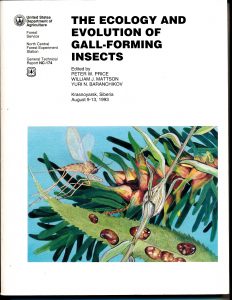
74. Abrahamson, W.G., J.M. Brown, S.K. Roth, D.V. Sumerford, J.D. Horner, M.D. Hess, S.T. How, T.P. Craig, R.A. Packer, and J.K. Itami. 1994. Gallmaker speciation: an assessment of the roles of host-plant characters and phenology, gallmaker competition, and natural enemies. In: P. Price, W. Mattson, and Y. Baranchikov, eds., , pp 208-222.
73. Craig, T.P., J.K. Itami, J.D. Horner, and W.G. Abrahamson. 1994. Host shifts and speciation in gall-forming insects. In: P. Price, W. Mattson, and Y. Baranchikov, eds., Gall-forming Insects. USDA Forest Service, North Central Experiment Station. General Technical Report NC-174, pp 194-207.
72. How, S.T., W.G. Abrahamson, and M.J. Zivitz. 1994. Disintegration of clonal connections in Solidago altissima (Compositae). Bulletin of the Torrey Botanical Club 121: 338-344.
71. Hawkes, C.V. and W.G. Abrahamson. 1994. Vegetation and succession of a central Pennsylvania limestone synclinal ridge. Journal of the Pennsylvania Academy of Science 68: 99-106.
70. Menges, E.S., W.G. Abrahamson, K.T. Givens, N.P. Gallo, and J. N. Layne. 1993. Twenty years of vegetation change in five long-unburned Florida plant communities. Journal of Vegetation Science 4: 375-386.
69. How, S.T., W.G. Abrahamson, and T.P. Craig. 1993. Role of host plant phenology in host use by Eurosta solidaginis (Diptera: Tephritidae) on Solidago (Compositae). Environmental Entomology 22: 388-396.
68. Craig, T.P., J.K. Itami, W.G. Abrahamson, and J.D. Horner. 1993. Behavioral evidence for host-race formation in Eurosta solidaginis. Evolution 47: 1696-1710.
67. Horner, J.D. and W.G. Abrahamson. 1992. Influence of plant genotype and environment on oviposition preference and offspring survival in a gallmaking herbivore. Oecologia 90: 323-332.
66. Stein, S.J., P.W. Price, W.G. Abrahamson, and C.F. Sacchi. 1992. The effect of fire on stimulating willow regrowth and subsequent attack by grasshoppers and elk. Oikos 65: 190-196.
65. Weis, A.E., W.G. Abrahamson, and M.C. Andersen. 1992. Variable selection on Eurosta‘s gall size, I: the extent and nature of variation in phenotypic selection. Evolution 46: 1674-1697.
64. Abrahamson, W.G. 1991. South Florida slash pine mortality in seasonal ponds. Florida Scientist 54: 80-83.
63. Abrahamson, W.G., S.S. Anderson, and K.D. McCrea. 1991. Clonal integration: nutrient sharing between sister ramets of Solidago altissima. American Journal of Botany 78: 1508-1514.
62. Abrahamson, W.G., K.D. McCrea, A.J. Whitwell, and L.A. Vernieri. 1991. The role of phenolics in goldenrod ball gall resistance and formation. Biochemical Systematics and Ecology 19: 615-622.
61. Johnson, A.F. and W.G. Abrahamson. 1990. A note on fire responses of species in rosemary scrubs on the southern Lake Wales Ridge, Florida. Florida Scientist 53: 138-143.
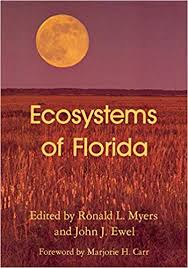
60. Bosio, C.F., K.D. McCrea, J.K. Nitao, and W.G. Abrahamson. 1990. Defensive chemistry of Solidago altissima: effects on the generalist herbivore Trichoplusia ni. Environmental Entomology 19: 465-468.
59. Abrahamson, W.G. and D.C. Hartnett. 1990. Pine flatwoods and dry prairies. In: R.L. Myers and J.J. Ewel, eds., Ecosystems of Florida. University of Central Florida Press, Orlando, FL. pp. 103-149.
58. Waring, G.L., W.G. Abrahamson, and D.J. Howard. 1990. Genetic differentiation among host-associated populations of the gallmaker Eurosta solidaginis (Diptera: Tephritidae). Evolution 44: 1648-1655.
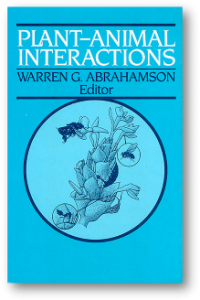
57. Abrahamson, W.G. (editor). 1989. Plant-Animal Interactions (textbook). McGraw-Hill Publishing, NY. pp 480.
56. Abrahamson, W.G. 1989. Plant-animal interactions: an overview. In: W.G. Abrahamson, ed., Plant-Animal Interactions. McGraw-Hill Publishing, NY. pp. 1-22.
55. Abrahamson, W.G., T.G. Whitham, and P.W. Price. 1989. Fads in ecology: is there a bandwagon and do we know when to get off? BioScience 39: 321-325.
54. Abrahamson, W.G., K.D. McCrea, and S.S. Anderson. 1989. Host preference and recognition by the goldenrod ball gallmaker Eurosta solidaginis (Diptera: Tephritidae). American Midland Naturalist 121: 322-330.
53. Abrahamson, W.G., J.F. Sattler, K.D. McCrea, and A.E. Weis. 1989. Variation in selection pressures on the goldenrod gall fly and the competitive interactions of its natural enemies. Oecologia 79: 15-22.
52. Anderson, S.S., K.D. McCrea, W.G. Abrahamson, and L.M. Hartzel. 1989. Host genotype choice by the ball gallmaker Eurosta solidaginis (Diptera: Tephritidae). Ecology 70: 1048-1054.
51. Abrahamson, W.G. and C.R. Abrahamson. 1989. Nutritional quality of biotically dispersed fruits in Florida sandridge habitats. Bulletin of the Torrey Botanical Club 116: 215-228.
50. Weis, A.E., K.D. McCrea, and W.G. Abrahamson. 1989. Can there be an escalating arms race without coevolution? Implications from a host-parasitoid simulation. Evolutionary Ecology 3: 361-370.
49. Carango, P., K.D. McCrea, W.G. Abrahamson, and M.I. Chernin. 1988. Induction of a 58,000 dalton protein during goldenrod gall formation. Biochemical and Biophysical Research Communications 152: 1348-1352.
48. Abrahamson, W.G., S.S. Anderson, and K.D. McCrea. 1988. Effects of manipulation of plant carbon/nutrient balance on tall goldenrod resistance to a gallmaking herbivore. Oecologia 77: 302-306.
47. Abrahamson, W.G. and A.E. Weis. 1987. Nutritional ecology of arthropod gall makers. In: F. Slansky, Jr. and J.G. Rodriquez, eds., Nutritional ecology of insects, mites, spiders, and related invertebrates. John Wiley & Sons, Inc., Publishers, New York, NY. pp. 235-258.
46. McCrea, K.D. and W.G. Abrahamson. 1987. Reproductive effort in clonal plants: constant allocation ratios among ramets? Oecologia 72: 358-359.
45. McCrea, K.D. and W.G. Abrahamson. 1987. Variation in herbivore infestation: historical vs. genetic factors. Ecology 68: 822-827.
44. Weis, A.E., H.G. Hollenbach, and W.G. Abrahamson. 1987. Genetic and maternal effects on seedling characters of Solidago altissima (Compositae). American Journal of Botany 74: 1476-1486.
43. Abrahamson, W.G. and K.D. McCrea. 1986. Nutrient and biomass allocation in Solidago altissima: effects of two stem gallmakers, fertilization, and ramet isolation. Oecologia 68: 174-180.
42. Abrahamson, W.G. and K.D. McCrea. 1986. The impacts of galls and gallmakers on plants. Proceedings of the Entomological Society of Washington 88: 364-367.
41. Weis, A.E. and W.G. Abrahamson. 1986. Evolution of host plant manipulation by gallmakers: ecological and genetic factors in the Solidago-Eurosta system. American Naturalist 127: 681-695.
40. Peroni, P.A. and W.G. Abrahamson. 1986. Succession in Florida sandridge vegetation: a retrospective study. Florida Scientist 49: 176-191.
39. Johnson, A.F., W.G. Abrahamson, and K.D. McCrea. 1986. Comparison of biomass recovery after fire of a seeder (Ceratiola ericoides) and a sprouter (Quercus inopina) species from south-central Florida. American Midland Naturalist 116: 423-428.
38. Peroni, P.A. and W.G. Abrahamson. 1985. A rapid method for determining losses of native vegetation. Natural Areas Journal 5(3): 20-24.
37. Weis, A.E. and W.G. Abrahamson. 1985. Potential selective pressures by parasitoids on a plant-herbivore interaction. Ecology 66: 1261-1269.
36. Weis, A.E., W.G. Abrahamson, and K.D. McCrea. 1985. Host gall size and oviposition success by the parasitoid Eurytoma gigantea. Ecological Entomology 10: 341-348.
35. Peroni, P.A. and W.G. Abrahamson. 1985. Vegetation loss on the southern Lake Wales Ridge, Florida. Palmetto (The Quarterly Journal of the Florida Native Plant Society) 5(3): 6-7.
34. McCrea, K.D. and W.G. Abrahamson. 1985. Evolutionary impacts of the goldenrod ball gall-maker on Solidago altissima clones. Oecologia 68: 20-22.
33. McCrea, K.D., W.G. Abrahamson, and A.E. Weis. 1985. Goldenrod ball gall effects of Solidago altissima: 14C translocation and growth. Ecology 66: 1902-1907.
32. Abrahamson, W.G. and K.D. McCrea. 1985. Seasonal nutrient dynamics of Solidago altissima (Compositae). Bulletin of the Torrey Botanical Club 112: 414-420.
31. Abrahamson, W.G. 1984. Post-fire recovery of Florida Lake Wales Ridge vegetation. American Journal of Botany 71: 9-21.
30. Abrahamson, W.G. 1984. Species responses to fire on the Florida Lake Wales Ridge. American Journal of Botany 71: 35-42.
29. Abrahamson, W.G. 1984. Fire: Smokey Bear is wrong. BioScience 34: 179-180.
28. Givens, K.T., J.N. Layne, W.G. Abrahamson, and S.C. White. 1984. Structural changes and successional relationships of five Florida Lake Wales Ridge plant communities. Bulletin of the Torrey Botanical Club 111: 8-18.
27. Abrahamson, W.G., A.F. Johnson, and J.N. Layne. 1984. Archbold Biological Station vegetation map. Archbold Biological Station, Lake Placid, FL.
26. Abrahamson, W.G., A.F. Johnson, J.N. Layne, and P. Peroni. 1984. Vegetation of the Archbold Biological Station, Florida: an example of the southern Lake Wales Ridge. Florida Scientist 47: 209-250.
25. Abrahamson, W.G., P.O. Armbruster, and G D. Maddox. 1983. Numerical relationships of the Solidago altissima stem gall insect-parasitoid guild food chain. Oecologia 58: 351-357.
24. Johnson, A.F. and W.G. Abrahamson. 1982. Quercus inopina: a species to be recognized from south-central Florida. Bulletin of the Torrey Botanical Club 109: 392-395.
23. Abrahamson, W.G. and H. Caswell. 1982. On the comparative allocation of biomass, energy, and nutrients in plants. Ecology 63: 982-991.
22. Abrahamson, W.G. 1980. Demography and vegetative reproduction. In: O.T. Solbrig, ed., Demography and the evolution of plant populations. Blackwell Scientific, Oxford, England. pp. 89-106.
21. Abrahamson, W.G. 1979. Patterns of resource allocation in wildflower populations of fields and woods. American Journal of Botany 66: 71-79.
20. Abrahamson, W.G. 1979. A comment on vegetative and seed reproduction in plants. Evolution 33: 517-519.
19. Hartnett, D.C. and W.G. Abrahamson. 1979. The effects of stem gall insects on life history patterns in Solidago canadensis L. (Compositae). Ecology 60: 910-917.
18. Stinner, B.R. and W.G. Abrahamson. 1979. Energetics of the Solidago canadensis stem gall insect-parasitoid guild interaction. Ecology 60: 918-926.
17. Abrahamson, W.G. and K.D. McCrea. 1977. Ultraviolet light reflection and absorption patterns in populations of Rudbeckia (Compositae). Rhodora 79: 269-277.
16. Abrahamson, W.G. and B. Hershey. 1977. Resource allocation and growth of Impatiens capensis (Balsaminaceae) in two habitats. Bulletin of the Torrey Botanical Club 104: 160-164.
15. Holler, L. and W.G. Abrahamson. 1977. Seed and vegetation reproduction in relation to density in Fragaria virginiana (Rosaceae). American Journal of Botany 64: 1003-1007.
14. Abrahamson, W.G. 1977. Algae-grazer interactions. In: L.B. Crowder, ed., Ecological lab experiences: an ideas forum. Michigan State University, Department of Zoology, Undergraduate Education Committee. East Lansing, MI. pp. 79-83.
13. Abrahamson, W.G. 1977. The effects of grazing on vegetation. In: L.B. Crowder, ed., Ecological lab experiences: an ideas forum. Michigan State University, Department of Zoology, Undergraduate Education Committee. East Lansing, MI. pp. 85-90.
12. Abrahamson, W.G. 1977. Solidago canadensis galls: a study of interacting natural populations. In: L.B. Crowder, ed., Ecological lab experiences: an ideas forum. Michigan State University, Department of Zoology, Undergraduate Education Committee. East Lansing, MI. pp. 91-96.
11. Abrahamson, W.G. 1977. Niche analysis of marine algae. In: L.B. Crowder, ed., Ecological lab experiences: an ideas forum. Michigan State University, Department of Zoology, Undergraduate Education Committee. East Lansing, MI. pp. 127-131.
10. Abrahamson, W.G. 1977. Ecological debates. In: L.B. Crowder, ed., Ecological lab experiences: an ideas forum. Michigan State University, Department of Zoology, Undergraduate Education Committee. East Lansing, MI. pp. 197-200.
9. Abrahamson, W.G. and J. Rubinstein. 1976. Growth forms of Opuntia compressa (Cactaceae) in Florida sandridge habitats. Bulletin of the Torrey Botanical Club 103: 77-79.
8. Abrahamson, W.G. 1975. Reproduction of Rubus hispidus L. in different habitats. American Midland Naturalist 93: 471-478.
7. Abrahamson, W.G. 1975. Reproductive strategies of dewberries. Ecology 56: 721-726.
6. Abrahamson, W.G. and M. Gadgil. 1973. Growth form and reproductive effort in goldenrods. American Naturalist 107: 651-661.
5. Maguire, L., P. Nelson, W.G. Abrahamson, and D.S. Woodruff. 1973. Concord Field Station: a guide to resources. I. Estabrook Woods Vegetation Map. Museum of Comparative Zoology, Harvard University, Cambridge, MA.
4. Maguire, L., P. Nelson, W.G. Abrahamson, and D.S. Woodruff. 1973. Concord Field Station: a guide to resources. II. Pickman Area Vegetation Map. Museum of Comparative Zoology, Harvard University, Cambridge, MA.
3. Abrahamson, W.G. 1973. Concord Field Station: a guide to resources. III. Vegetation and Flora. Museum of Comparative Zoology, Harvard University, Cambridge, MA.
2. Abrahamson, W.G. 1973. Resource allocation in plant populations of different habitats. Ph.D. Dissertation, Harvard University, Cambridge, MA. 133 pg.
1. Abrahamson, W.G. and O.T. Solbrig. 1970. Soil preferences and variation in flavonoid pigments in species of Aster. Rhodora 72: 251-263.